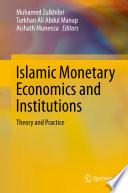Theory and Practice
";Slavin writes in such a way that concepts are very clear and examples illustrating the concepts are engaging and relevant."; Karen Huxtable-Jester, University of Texas at Dallas ";For the teacher candidate, who is often encountering this material for the first time, the tables, organization, and formatting of the chapters make this text eminently accessible."; Richard Battaglia, California Lutheran University ";The major strength of this text is its relevance to effective teaching. Slavin touches on various approaches and types of teaching and the consistent message of intentional teaching is evident."; Joshua S. Smith, University at Albany This edition continues to have in-depth, practical coverage with a focus on the intentional teacher. It presents up-to-the-minute research that a reflective, intentional teacher can apply. The eighth edition of this popular text from renowned educational psychologist Robert Slavin translates theory into practices that teachers can use in their classrooms and focuses on the concept of intentionality. An ";intentional teacher,"; according to Slavin, is one who constantly reflects on his or her practice and makes instructional decisions based on a clear conception of how these practices affect students. To help readers become ";intentional teachers,"; the author models best practices through classroom examples and offers questions to guide the reader. New to This Edition: NEW ";Teaching Dilemmas"; in all chapters introduce controversial issues of practice and ask students to reflect on their own beliefs with Reflective Questions. NEW ";Certification Pointers"; throughout the text note text content likely to appear on state certification tests. NEW ";Personal Reflections"; describe chapter-related events from the author's own experience, helping students relate to the text as the product of a real author's work. Updated throughout with important new coverage on programs for English language learners (Chapter 4), technology and No Child Left Behind (Chapter 9) to keep students abreast of current trends and issues. NEW IDEA updates are included in Chapter 12. NEW certification guides for state-specific tests in California, Texas, New York, and Florida as well as a general certification guide based on Praxis are available free with the text so that students can readily keep and use this text to prepare for their state certification tests. Please visit the companion web site for this book at www.ablongman.com/slavin8e to find practice quizzes, web links, activities and more! Package this text with MyLabSchool--a powerful set of online tools that bring the classroom to life! See the inside cover and visit www.mylabschool.com for more information!
Please visit the companion web site for this book at www.ablongman.com/slavin8e to find practice quizzes, web links, activities and more! Package this text with MyLabSchool--a powerful set of online tools that bring the classroom to life!









